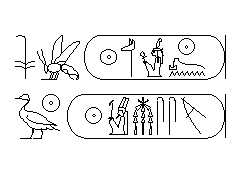
Pharaoh of the 19th Dynasty, son of Sethos I. He was one of the most important and longest-ruling pharaohs ever - he ruled for 67 years. During his reign he continued the war against the Hittites begun by his father, which culminated in the Battle of Kadesh, where Ramesses only averted defeat by personal bravery. Eventually the Egyptian army was forced to withdraw, but a few years later Ramesses was able to reconquer part of the lost territory. Shortly after he signed a peace treaty with the Hittites. In Egypt, Ramesses initiated a vast amount of construction work, including extensions to the temples of Luxor and Karnak, and his mortuary temple, the Ramesseum. Ramesses also built in Nubia, for example the temples of Abu Simbel. The residence was moved to a new city in the Delta, called Per-Ramessu ('House of Ramesses'), founded by Sethos I. Statues, obelisks and columns were transported there from other cities. Temples were built for the national gods Amun, Re and Ptah, and other gods were not forgotten either, for example, Seth of Avaris. As the god of the lands conquered in Asia, this god was identified with Baal and connected with the goddess Anat. In the meantime, Thebes remained the religious centre as the city of the god Amun. His high priests began to acquire more and more influence as the possessors of religious power, which would eventually result in the God's State of Amun. The most important of Ramesses II's wives was Queen Nefertari, who has a famous tomb in the Valley of the Queens. Many of his numerous sons were buried in a collective tomb in the Valley of the Kings, rediscovered in the mid-nineties. It is known that Ramesses' son Khaemwaset, High Priest of Ptah in Memphis, built the last resting place of several Apis bulls in the Serapeum at Saqqara (where he himself was perhaps also buried).